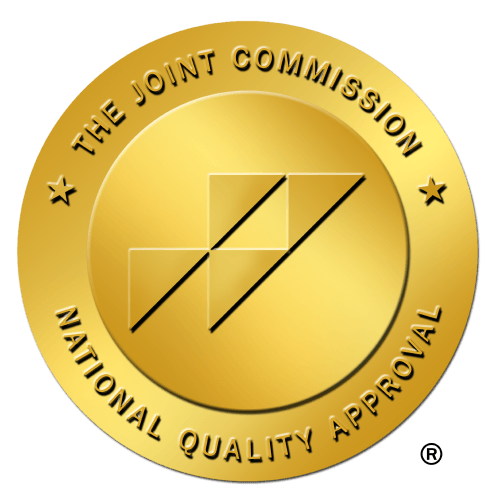Bipolar I vs Bipolar II: Understanding the Contrasts of Bipolar Disorder


Bipolar I vs Bipolar II: Do you know the differences? And which one's worse, anyway? Our blog explores bipolar disorder and its forms.
Bipolar disorder, often described as a rollercoaster of emotions, is a complex mental health condition affecting millions worldwide. It's not just about mood swings; it's a condition that can disrupt lives, relationships, and daily functioning.
Imagine experiencing extreme highs and devastating lows within the same week, sometimes even the same day. This is the reality for those living with bipolar disorder.
Amidst the complexity of bipolar disorder, it's crucial to grasp the distinctions between Bipolar I and Bipolar II. While they share some common ground, the differences in their symptoms, severity, and impact on daily life are profound.
This knowledge isn't confined to medical professionals; it's a lifeline for affected individuals, their families, and society. It enables us to offer the right support, understanding, and treatment.
In this article, we will embark on a journey to explore the realms of Bipolar I and Bipolar II. We'll navigate through the highs and lows, unraveling the subtle distinctions that set them apart while acknowledging the common ground they share.
Bipolar I vs Bipolar II: What Is Bipolar Disorder?
Bipolar disorder is a serious mental illness with far-reaching consequences for those suffering from it. Those affected by it experience significant highs and lows in mood, cycling between periods of mania and depression. The inability to maintain equilibrium in one's emotional state, energy level, and daily routine is a significant symptom of this disorder.
Bipolar I vs Bipolar II: Two Types of Bipolar Disorder
There are two main types of bipolar disorder- Bipolar I and Bipolar II, each with distinct features.
What Is Bipolar I Disorder?
Bipolar I Disorder is characterized by manic episodes lasting at least seven days or being so severe that they require immediate hospitalization. During these manic episodes, individuals may experience intense euphoria, increased energy, reduced need for sleep, and impaired judgment.
Often called "Bipolar 1," this is a serious mental health condition characterized by recurrent and distinct periods of intense mood disturbance. These mood episodes are divided into two main categories: manic episodes and depressive episodes. What sets Bipolar I apart from Bipolar II is the presence of full-blown manic episodes.
These manic episodes are often followed by depressive episodes, where individuals feel extreme sadness, hopelessness, and a loss of interest in activities they once enjoyed. Importantly, a person with Bipolar I may or may not experience depressive episodes.
Bipolar I Manic Episodes: Symptoms, Duration, and Impact:
Manic episodes are the hallmark feature of Bipolar I Disorder. During a manic episode, individuals experience heightened euphoria, energy, and activity. Key characteristics of manic episodes include:
Elevated Mood: Individuals often feel excessively happy or elated during manic episodes.
Increased Energy: Manic individuals have a surplus of physical and mental energy, often sleeping very little or not at all without feeling fatigued.
Racing Thoughts: Thoughts can become rapid, disorganized, and filled with creative ideas, but they may also be erratic and difficult to follow.
Impulsivity: Impulsive behavior, such as overspending, risky sexual behavior, or substance abuse, is common during manic episodes.
Decreased Need for Sleep: Individuals may go without sleep for days without feeling tired.
Distractibility: Concentration becomes challenging as attention easily shifts from one idea or task to another.
Grandiosity: People with Bipolar I may have an inflated self-esteem or self-importance, believing they have special powers or abilities.
If hospitalization is not necessary, a manic episode in Bipolar I usually lasts for at least a week. A manic episode can cause significant disruption in a person's life, including their personal relationships, their professional responsibilities, and their ability to think clearly.
Bipolar I Depressive Episodes: Symptoms, Duration, and Impact:
In addition to manic episodes, individuals with Bipolar I Disorder also experience depressive episodes. The symptoms of depressive episodes are similar to those of Major Depressive Disorder and can include:
Pervasive Sadness: A deep and persistent feeling of sadness or emptiness.
Fatigue: Extreme fatigue and a noticeable absence of energy.
Changes in Sleep Patterns: Difficulty sleeping or excessive drowsiness.
Feelings of Guilt or Worthlessness: Negative self-perception and self-blame.
Difficulty Concentrating: Impaired ability to focus or make decisions.
Appetite Changes: Noticeable fluctuations in body weight.
Depressive episodes in Bipolar I can last for at least two weeks. The alternating between manic and depressive episodes is characteristic of the "bipolar" nature of the disorder.
Does Everyone with Bipolar I Experience Depressive Episodes?
It's important to note that not all individuals with Bipolar I Disorder will experience depressive episodes. Some may have a pattern of recurrent manic episodes without a history of major depressive episodes, although this is less common.
The key distinguishing factor for Bipolar I is the presence of manic episodes. In contrast, depressive episodes are not always required for diagnosis.
Are You Struggling with Mental Health or Addiction?
We Can Help. Call Us Now!
CALL: 877-839-1772
What Is Bipolar II Disorder?
Bipolar II Disorder, on the other hand, is characterized by a pattern of hypomanic episodes (less severe than full-blown manic episodes) alternating with depressive episodes. While the hypomanic episodes in Bipolar II are less intense than those in Bipolar I, individuals still experience increased energy, impulsivity, and mood changes. Bipolar II individuals always experience depressive episodes, which can be disabling and long-lasting.
Bipolar II Disorder is a complex mental health condition characterized by distinct mood swings. It's considered one of the two primary types of bipolar disorders, the other being Bipolar I. Unlike Bipolar I, where individuals experience full-blown manic episodes, Bipolar II is marked by hypomanic episodes and depressive episodes.
Bipolar II: Hypomanic Episodes
Symptoms: During hypomanic episodes, individuals may feel unusually euphoric, energetic, or irritable. They might have increased self-esteem and confidence, experience racing thoughts, and take on multiple tasks simultaneously. Unlike full manic episodes, hypomanic episodes are less severe, which means the person can often function relatively normally.
Duration: Hypomanic episodes typically last at least four days and can be shorter than manic episodes, which persist for at least seven days.
Impact: While individuals with Bipolar II may be more productive during hypomania, they might also make impulsive decisions without considering the consequences.
Bipolar II: Depressive Episodes
Symptoms: Depressive episodes are a hallmark of Bipolar II. Common symptoms include enduring feelings of sadness, diminished interest in previously pleasurable pastimes, alterations in eating or sleeping habits, fatigue, a sense of diminished self-worth, and sometimes thoughts of death or suicide.
Duration: These depressive episodes can last for weeks or even months and can be severely debilitating.
Impact: The impact of depressive episodes on daily life can be profound, affecting work, relationships, and overall quality of life.
Bipolar II Depressive Episodes
What sets Bipolar II apart from Bipolar I is that individuals with Bipolar II always experience depressive episodes, whereas Bipolar I individuals may not. This constant cycle of hypomania and depression can make maintaining stable emotional and functional states challenging.
Bipolar I Vs. Bipolar II: Key Differences
While both Bipolar I and Bipolar II are characterized by periods of extreme mood swings, including manic or hypomanic highs and depressive lows, they have distinct differences that are crucial to understanding. Here are some primary distinctions:
Manic Vs. Hypomanic Episodes - Severity and Duration
Bipolar I: Individuals with Bipolar I experience full-blown manic episodes characterized by intense euphoria, impulsivity, and, often, reckless behavior. These manic episodes typically last at least seven days or are severe enough to require hospitalization.
Bipolar II: In Bipolar II, individuals have hypomanic episodes, less severe than full mania. Hypomania is marked by increased energy, creativity, and productivity. These episodes last at least four consecutive days but are not severe enough to cause significant disruption in daily life.
Presence or Absence of Psychotic Features
Bipolar I: Psychotic features, such as hallucinations or delusions, can occur during manic episodes. These experiences are not present in Bipolar II.
Bipolar II: Hypomanic episodes in Bipolar II do not involve psychotic features.
Impact on Daily Life and Relationships
Bipolar I: Manic episodes in Bipolar I can lead to risky behaviors, strained relationships, and legal or financial problems. Depressive episodes can be severe and debilitating, impacting one's ability to function in daily life.
Bipolar II: While hypomanic episodes in Bipolar II are less severe than full mania, they can still result in impulsivity and relationship challenges. Depressive episodes tend to be more frequent and longer lasting, affecting daily functioning.
Treatment Approaches: Medications and Therapy:
Bipolar I: Treatment for Bipolar I often includes mood stabilizers and antipsychotic medications to manage manic episodes. During episodes of depression, healthcare providers may prudently recommend using antidepressant medications. Psychotherapy, such as Cognitive Behavioral Therapy (CBT), is commonly used.
Bipolar II: Medications like mood stabilizers are also used for Bipolar II, focusing on preventing both hypomanic and depressive episodes. Psychotherapy plays a significant role in managing mood swings, with therapies like CBT and Dialectical Behavioral Therapy (DBT) being effective.
Are You Struggling with Mental Health or Addiction?
We Can Help. Call Us Now!
CALL: 877-839-1772
Diagnosis and Assessment of Bipolar I Vs. Bipolar II
Diagnosing Bipolar I (Bipolar 1) and Bipolar II (Bipolar 2) is a meticulous process that mental health professionals undertake to provide appropriate care and treatment. It involves:
Clinical Assessment
Mental health professionals conduct in-depth clinical interviews to gather a comprehensive medical and psychological history. They pay close attention to the patient's reported symptoms, mood fluctuations, and behavioral patterns.
Mood Episodes Evaluation
The core of the diagnosis lies in distinguishing between manic and hypomanic episodes, which are characteristic of Bipolar I and Bipolar II, respectively. Manic episodes in Bipolar I are marked by severe symptoms and often include psychosis, whereas hypomanic episodes in Bipolar II are less severe and lack psychotic features.
Duration and Patterns
Professionals assess the duration and recurrence of mood episodes. For Bipolar I diagnosis, at least one manic episode is crucial. In contrast, Bipolar II diagnosis requires at least one hypomanic and one depressive episode.
Exclusion of Other Conditions
Mental health practitioners carefully rule out other psychiatric or medical conditions that could mimic bipolar symptoms, such as substance abuse, thyroid disorders, or other mood disorders.
Family History and Genetics
A family history of bipolar disorder can be an important indicator, as these conditions often have a genetic component.
Bipolar I Vs. Bipolar II: The Importance of Accurate Diagnosis for Effective Treatment
Accurate diagnosis of Bipolar I and Bipolar II is paramount for several reasons:
Tailored Treatment
Each subtype requires a different treatment approach. Misdiagnosis may lead to inappropriate treatment, and potentially worsening symptoms.
Medication Selection
Accurate diagnosis helps determine the most suitable medications. For example, mood stabilizers are often prescribed for Bipolar I, while individuals with Bipolar II may benefit from different medications.
Psychotherapy
The type of psychotherapy, such as Cognitive-Behavioral Therapy (CBT) or Dialectical Behavior Therapy (DBT), can vary based on the diagnosis.
Prognosis
Knowing the specific subtype aids in predicting the course of the illness and potential complications.
Are You Struggling with Mental Health or Addiction?
We Can Help. Call Us Now!
CALL: 877-839-1772
Bipolar I Vs. Bipolar II: Common Assessment Tools and Criteria Used in Diagnosis
Several standardized tools and criteria are used in the diagnosis of Bipolar I and Bipolar II:
DSM-5 Criteria: Mental health professionals refer to the Diagnostic and Statistical Manual of Mental Disorders, Fifth Edition (DSM-5), which outlines the diagnostic criteria for Bipolar I and Bipolar II.
Mood Charts and Diaries: Patients are often encouraged to keep mood charts and diaries to track their mood swings, sleep patterns, and other relevant data. These can be valuable in providing evidence for diagnosis.
Questionnaires and Rating Scales: Professionals may use rating scales like the Mood Disorder Questionnaire (MDQ) or the Hypomania Checklist (HCL-32) to gather additional information.
Treatment Options for Bipolar I Vs. Bipolar II
Effective management of these conditions often involves a combination of medications and psychotherapy, all tailored to the individual's specific needs. Let us delve into the treatment options for both Bipolar I and Bipolar II.
Bipolar I Vs. Bipolar II: Medications
Mood Stabilizers: Mood stabilizers are a cornerstone of bipolar disorder treatment. They help regulate extreme mood swings, reducing the frequency and intensity of manic and depressive episodes. In Bipolar I, where full-blown mania is common, mood stabilizers like lithium are often prescribed. In contrast, Bipolar II individuals who experience hypomania may also benefit from mood stabilizers, typically in lower doses.
Antipsychotics: Antipsychotic medications are primarily used in Bipolar I to manage acute manic episodes with psychotic features. They help alleviate symptoms like delusions or hallucinations. For Bipolar II, antipsychotics are less commonly prescribed unless there are specific indications of severe symptoms.
Antidepressants: In some cases, individuals with Bipolar II may be prescribed antidepressants to alleviate depressive episodes. However, this is a delicate balance, as antidepressants can trigger manic episodes in bipolar patients. They are usually prescribed in conjunction with mood stabilizers or under close supervision.
Bipolar I Vs. Bipolar II: Psychotherapy
Cognitive-Behavioral Therapy (CBT): CBT is an evidence-based psychotherapy that helps individuals identify and modify negative thought patterns and behaviors. It effectively teaches coping strategies, manages stressors, and prevents relapses. Both Bipolar I and Bipolar II patients can benefit from CBT.
Dialectical Behavior Therapy (DBT): DBT focuses on emotional regulation and interpersonal effectiveness. While it is often associated with borderline personality disorder, it can also be helpful for individuals with bipolar disorders, especially when emotional instability is a prominent symptom.
Family Therapy: Bipolar disorders not only affect the individual but also impact their loved ones. Family therapy can help improve communication and educate family members about the condition. It's particularly beneficial when family dynamics contribute to stress or trigger episodes.
It is crucial to emphasize the importance of empathy and support for individuals dealing with both Bipolar 1 and Bipolar 2. They encounter unique challenges on their path to stability and well-being. By comprehending the complexities and types of bipolar disorder and fostering a supportive atmosphere, we can enhance the quality of life for those affected by this condition.
Are You Struggling with Mental Health or Addiction?
We Can Help. Call Us Now!
CALL: 877-839-1772
Bipolar I Vs. Bipolar II: The Forge Recovery Center Provides Evidence-Based Treatment for Both
Bipolar disorder I and II are both devastating mental disorders that can upend a person's life, leaving them isolated and despairing of their future.
They're also both treatable and manageable with the right help.
The Forge Recovery Center provides evidence-based treatment for both types of bipolar disorder, ensuring that each client receives personalized care tailored to their needs. Guided by a trauma-informed philosophy, The Forge provides an ideal place for healing, where the roots of mental disorders and trauma can be examined and treated safely.
With dedicated mental health housing, 24/7 access to medical care, and more, The Forge Recovery Center is the ideal place to help treat the symptoms of bipolar disorder. Reach out today, and let's have a conversation about mental health.
Are You Struggling with Mental Health or Addiction?
We Can Help. Call Us Now!
CALL: 877-839-1772




